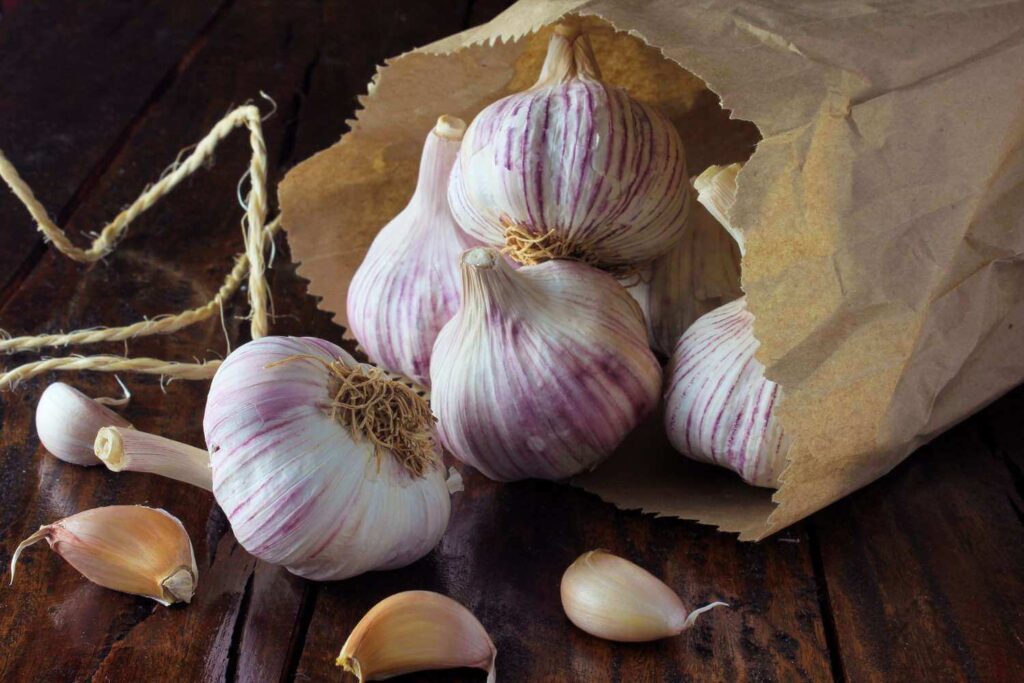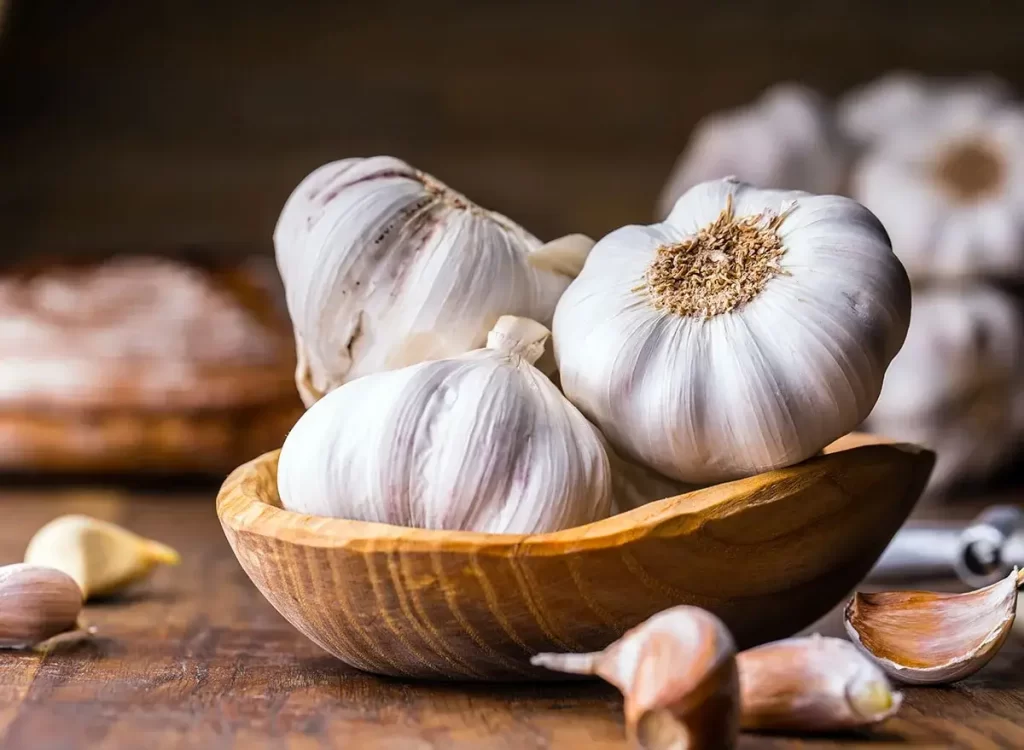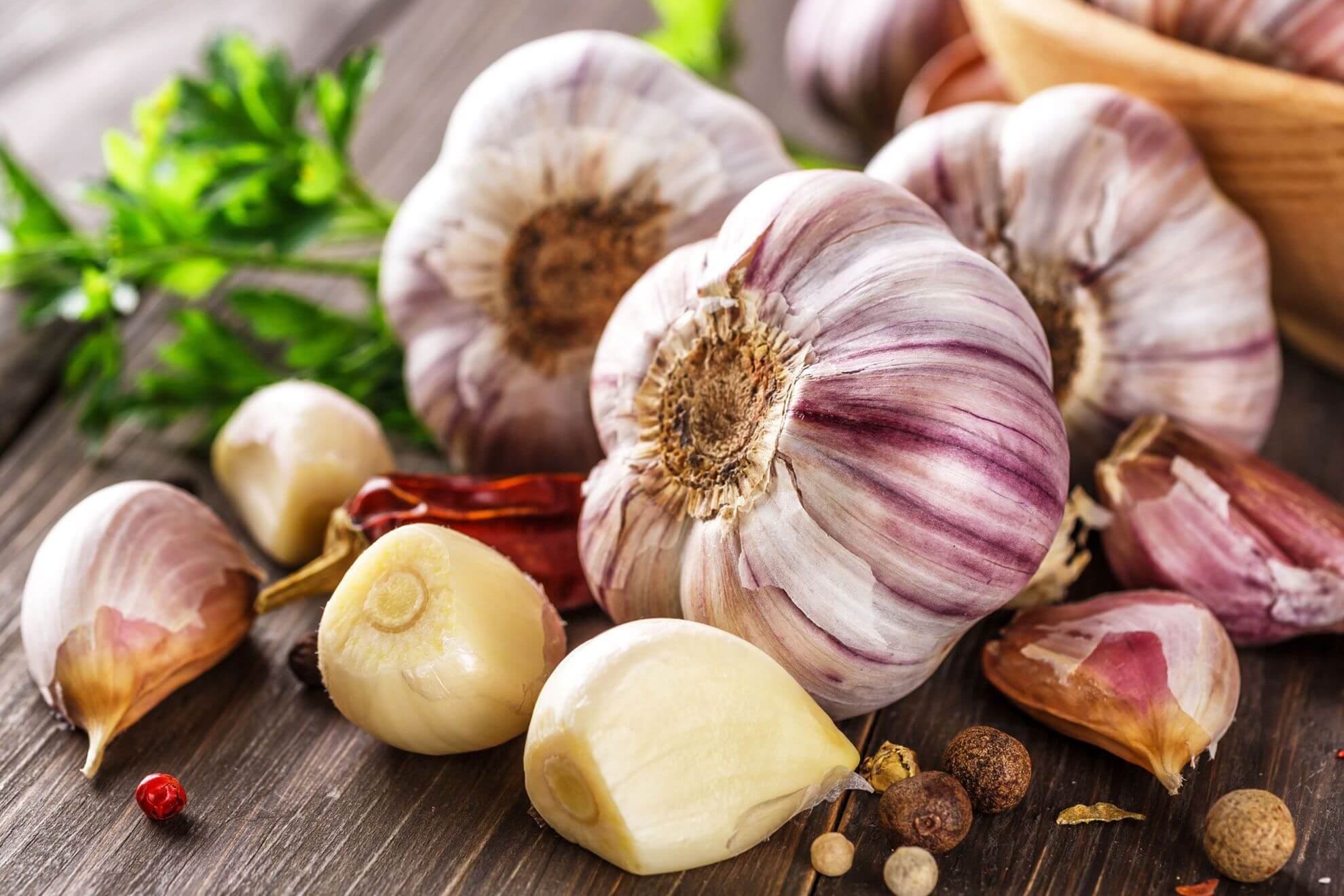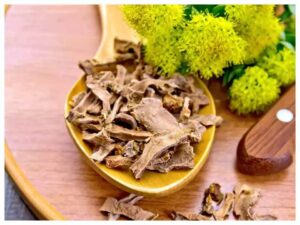The Mysterious Origins of Garlic
Garlic is a staple ingredient in many kitchens around the world, but its origins are shrouded in mystery. How did humans first discover this pungent and flavorful bulb? And how did it become so ubiquitous in cuisines from Italy to China? In this essay, we’ll explore some of the theories and legends surrounding the discovery of Benefits of Super-food Garlic
A Gift from the Gods
One popular theory about the origins of garlic is that it was a gift from the gods. In ancient Greek mythology, the god Hermes gave a bulb of garlic to Odysseus to help him ward off evil spirits during his long journey home from the Trojan War. Similarly, in Hindu mythology, the god Shiva is said to have created garlic from a drop of nectar that fell from his forehead.
While these myths may be entertaining, they don’t provide much insight into the actual discovery of garlic. It’s more likely that humans stumbled upon this plant through trial and error.
A Lucky Accident
One possibility is that early humans discovered garlic by accident. Garlic is a member of the allium family, which includes onions, leeks, and shallots. These plants all have a distinct, pungent flavor that comes from sulfur compounds. It’s possible that ancient foragers noticed this flavor and began to experiment with different parts of the plant.
Garlic grows in bulbs, which are made up of individual cloves. Each clove is covered in a papery skin that must be removed before the garlic can be eaten. It’s possible that early humans peeled back this skin and tasted the pungent flesh inside. This would have been a memorable experience, and could have led to further experimentation with garlic as a flavoring agent.
A Medicinal Herb
Another possibility is that garlic was discovered for its medicinal properties. Garlic has been used for centuries as a natural remedy for a variety of ailments, from coughs and colds to high blood pressure and cancer. Some of the sulfur compounds in garlic have antibacterial and antifungal properties, which could have been valuable to early humans living in unsanitary conditions.
It’s possible that early humans observed animals eating garlic and noticed that they seemed to be healthier as a result. They may have then experimented with garlic themselves and discovered its medicinal benefits.
The Mystery Continues
Despite centuries of cultivation and consumption, the origins of garlic remain a mystery. While we may never know exactly how humans first discovered this pungent bulb, we can be grateful that they did. Garlic has become an indispensable ingredient in kitchens around the world, adding flavor and nutrition to a wide variety of dishes.
So the next time you chop up some garlic for your spaghetti sauce or stir-fry, take a moment to appreciate the mystery and wonder of this ancient plant. Who knows what other culinary discoveries are waiting to be made?

The Power of Garlic: A Closer Look at its Health Benefits
Garlic has been used for centuries in both culinary and medicinal applications. From warding off evil spirits in ancient Greece to its use as a natural remedy for various ailments, garlic has a long and storied history. In this essay, we’ll take a closer look at some of the health benefits of garlic and how it can support overall health and well-being.
Antioxidant Properties
Garlic contains several compounds that have antioxidant properties. Antioxidants are substances that protect cells from damage caused by free radicals, which are molecules that can damage cells and contribute to the development of various diseases. One of the key antioxidants in garlic is allicin, which is formed when garlic is crushed or chopped.
Studies have shown that garlic’s antioxidant properties can help reduce oxidative stress and inflammation, which are associated with a wide range of chronic diseases, including heart disease, cancer, and Alzheimer’s disease. In addition, garlic’s antioxidant properties can help protect against environmental toxins and other sources of cellular damage.
Cardiovascular Health
One of the most well-known health benefits of garlic is its ability to support cardiovascular health. Garlic can help lower blood pressure, reduce LDL (bad) cholesterol levels, and prevent the formation of blood clots, all of which can contribute to a lower risk of heart disease.
Several studies have demonstrated the cardiovascular benefits of garlic. In one study, participants who took a garlic supplement for 12 weeks saw a significant reduction in blood pressure compared to a placebo group. Another study found that regular garlic consumption was associated with a reduced risk of heart disease and stroke.
Immune System Support
Garlic has long been valued for its immune-boosting properties. It contains several compounds that have antibacterial, antiviral, and antifungal properties, which can help protect the body from infections.
One of the key compounds in garlic is allicin, which has been shown to have antimicrobial activity against a wide range of pathogens, including bacteria, viruses, and fungi. In addition, garlic contains several other compounds that have immune-boosting properties, including sulfur compounds and selenium.
Cancer Prevention
Garlic has been shown to have potential anticancer properties, although more research is needed in this area. Studies have suggested that garlic may help prevent the development of several types of cancer, including stomach, colon, and prostate cancer.
One of the ways that garlic may help prevent cancer is by reducing oxidative stress and inflammation, both of which are associated with the development of cancer. In addition, garlic contains several compounds that have been shown to have anticancer properties, including organosulfur compounds and flavonoids.
Brain Health
Garlic may also have benefits for brain health. Several studies have suggested that garlic can help improve cognitive function and memory, and may even help protect against Alzheimer’s disease.
One of the ways that garlic may support brain health is by reducing oxidative stress and inflammation in the brain, both of which can contribute to cognitive decline. In addition, garlic contains several compounds that have neuroprotective properties, including S-allyl cysteine and diallyl trisulfide.
Other Potential Benefits
In addition to the health benefits mentioned above, garlic may have other potential benefits. Some studies have suggested that garlic may help improve bone health by increasing bone density and reducing the risk of osteoporosis. Garlic may also help improve digestive health by promoting the growth of beneficial gut bacteria.
Conclusion
Garlic has been used for centuries as both a culinary ingredient and a natural remedy for various ailments. Its many health benefits are supported by a growing body of scientific research, which has shown that garlic can help support cardiovascular health, boost the immune system, prevent cancer, and support brain health, among other potential benefits.
While garlic is generally safe to consume in moderate amounts, it may interact with certain medications or supplements, and may cause side effects in some people, such as bad breath, heartburn, or allergic reactions. It’s always a good idea to consult with a healthcare provider before adding garlic to your diet, especially if you are taking medication or have a health condition.
Overall, garlic is a versatile and flavorful ingredient that can add both nutrition and health benefits to a wide variety of dishes. Whether you’re chopping up fresh garlic for your favorite pasta sauce or taking a garlic supplement for its antioxidant properties, you can feel good about incorporating this powerful bulb into your daily routine.

The Nutritional Power of Garlic Unleashed: Exploring its Complex Components and Potent Core Ingredients
Garlic, a multifaceted and delectable ingredient, has been an indispensable element in global cuisines for countless centuries. But beyond its irresistible taste, garlic possesses a rich blend of nutritional components that can foster wellness and augment overall health. In this discourse, we will delve into the fundamental nutritional components of garlic and its potent core ingredients, which make it a superfood.
Nutritional Components of Garlic
Garlic is an excellent source of nutrient density, brimming with vitamins, minerals, and a plethora of other beneficial compounds. Some of the key nutritional components of garlic are:
- Vitamin C: Garlic boasts high levels of vitamin C, a robust antioxidant that bolsters immune function and safeguards cells from damage caused by free radicals.
- Manganese: Garlic is also abundant in manganese, a mineral that enhances bone health and assists the body in processing carbohydrates and fats.
- Selenium: Garlic harbors small amounts of selenium, a mineral that enhances immune function and plays a pivotal role in thyroid function.
- Sulfur compounds: Garlic’s signature pungent aroma and flavor stem from its sulfur compounds, which possess various health benefits such as antioxidant, anti-inflammatory, and antimicrobial properties.
- Allicin: When garlic is chopped or crushed, it releases allicin, a sulfur-containing compound that has been demonstrated to have numerous health benefits, including antimicrobial, anti-inflammatory, and cardiovascular advantages.
Core Ingredients of Garlic
Although garlic contains a wide range of nutritional components, it’s the core ingredients that lend it its potency and nourishing value. Some of the key core ingredients of garlic are:
- Alliin: Alliin, a sulfur-containing amino acid, is present in garlic. When garlic is chopped or crushed, alliin transforms into allicin, which is responsible for many of garlic’s health benefits.
- Sulfur compounds: Apart from allicin, garlic harbors several other sulfur-containing compounds such as diallyl disulfide, diallyl trisulfide, and S-allyl cysteine, which offer antioxidant, anti-inflammatory, and antimicrobial benefits.
- Flavonoids: Garlic is rich in flavonoids like quercetin and kaempferol, which have anti-inflammatory and antioxidant properties.
- Vitamins and minerals: Garlic is an excellent source of vitamins and minerals such as vitamin C, manganese, and selenium, which are essential for overall well-being.
How to Incorporate Garlic into Your Diet
There are myriad ways to incorporate garlic into your diet, from adding it to your favorite pasta dish to roasting it with vegetables. Here are some tips for integrating garlic into your diet:
Chop or crush garlic before use: To unleash the health benefits of garlic, it’s crucial to chop or crush it before use in recipes. This helps release the beneficial compounds, including allicin. Roast garlic: Roasting garlic can accentuate its sweetness and make it a delectable addition to roasted vegetables, mashed potatoes, or bread. Use garlic in marinades: Garlic can infuse flavor into marinades for chicken, fish, or tofu. Add garlic to soups and stews: Garlic can add depth of flavor to soups and stews, especially those made with beans or lentils.

Exploring the Various Methods for Consuming Garlic: From Raw to Roasted
Garlic is a versatile ingredient that can be used in a wide variety of recipes. But how should you consume garlic to get the most health benefits? From raw to roasted, there are many ways to prepare garlic. In this essay, we’ll explore some of the most popular methods for consuming garlic and the benefits of each.
Raw Garlic
Raw garlic is perhaps the most potent way to consume this flavorful ingredient. When garlic is raw, it contains all of its natural enzymes and beneficial compounds, including allicin. Raw garlic can be eaten on its own, but it’s most commonly used as a flavoring agent in dishes like salsa, guacamole, and hummus.
Raw garlic is a great option for those looking to get the most health benefits from this ingredient. Studies have shown that raw garlic can help support cardiovascular health, reduce inflammation, and boost the immune system. However, raw garlic can be quite pungent and may cause digestive discomfort in some people.
Cooked Garlic
Cooked garlic is a more mild option for those who want to incorporate garlic into their meals without the strong flavor and odor of raw garlic. When garlic is cooked, it loses some of its natural enzymes and beneficial compounds, including allicin. However, cooked garlic still contains other sulfur compounds and antioxidants that can provide health benefits.
There are many ways to cook garlic, including sautéing, roasting, and boiling. Some popular dishes that feature cooked garlic include garlic bread, roasted garlic mashed potatoes, and garlic butter shrimp.
Garlic Powder
Garlic powder is a convenient and versatile option for those who want to add the flavor of garlic to their meals without the hassle of peeling and chopping fresh garlic. Garlic powder is made by dehydrating garlic and then grinding it into a fine powder. While garlic powder does contain some of the beneficial compounds found in fresh garlic, it may also contain added salt and other ingredients.
Garlic powder can be used in a variety of dishes, including soups, stews, and marinades. It’s a great option for those who want the flavor of garlic without the texture.
Garlic Supplements
Garlic supplements are another option for those looking to get the health benefits of garlic. Garlic supplements come in a variety of forms, including capsules, tablets, and oils. Garlic supplements are often marketed as a natural remedy for a wide range of conditions, including high blood pressure, high cholesterol, and immune support.
While some studies have shown that garlic supplements may have health benefits, others have shown mixed results. It’s important to talk to a healthcare provider before starting a garlic supplement, as it may interact with certain medications and may cause side effects in some people.
Fermented Garlic
Fermented garlic is a traditional Korean ingredient that has gained popularity in recent years for its health benefits. Fermented garlic is made by placing peeled garlic cloves in a mixture of water, salt, and vinegar, and allowing it to ferment for several weeks.
Fermented garlic has a milder flavor than raw garlic and contains a higher concentration of beneficial compounds, including antioxidants and anti-inflammatory compounds. Fermented garlic can be used in a variety of dishes, including kimchi, soups, and stews.

Potential Side Effects of Garlic: When to Avoid Consuming this Versatile Ingredient
Garlic is a powerful ingredient that can provide a wide range of health benefits. However, like any natural remedy, it’s important to be aware of potential side effects and to use garlic in moderation. In this essay, we’ll explore some of the potential side effects of garlic and when to avoid consuming this versatile ingredient.
Digestive Upset
One of the most common side effects of garlic is digestive upset. Garlic contains fructans, which are a type of carbohydrate that can be difficult to digest. This can lead to symptoms like bloating, gas, and diarrhea in some people. The likelihood of experiencing digestive upset from garlic may be increased if you consume large amounts of raw garlic or if you have a sensitivity to fructans.
Bad Breath and Body Odor
Garlic is known for its strong flavor and odor, which can linger on your breath and skin after consumption. While this may not be a serious health concern, it can be a social issue. To minimize the impact of garlic breath and body odor, you can try consuming garlic with other foods that may help mask the odor, like parsley or mint.
Allergic Reactions
In rare cases, some people may have an allergic reaction to garlic. Symptoms of a garlic allergy can include itching, hives, and difficulty breathing. If you experience any of these symptoms after consuming garlic, it’s important to seek medical attention immediately.
Bleeding and Blood Clotting
Garlic has blood-thinning properties, which can be beneficial for some people. However, for others, this can be a potential health concern. If you’re taking blood-thinning medications, like warfarin or aspirin, it’s important to talk to your healthcare provider before consuming large amounts of garlic. Garlic may increase the risk of bleeding or interfere with the effectiveness of these medications.
Interactions with Medications
Garlic can also interact with certain medications, including those used to treat HIV/AIDS and tuberculosis. Garlic may decrease the effectiveness of these medications or increase the risk of side effects. If you’re taking any medications, it’s important to talk to your healthcare provider before consuming garlic.
Pregnancy and Breastfeeding
Garlic is generally considered safe for pregnant and breastfeeding women when consumed in normal amounts as a food. However, there is limited research on the safety of garlic supplements during pregnancy and breastfeeding. It’s important to talk to your healthcare provider before taking any garlic supplements during these times.
When to Avoid Garlic
While garlic is generally considered safe for most people, there are some situations when it’s best to avoid this versatile ingredient. Here are some scenarios when you should avoid consuming garlic:
- Before surgery: Garlic may increase the risk of bleeding during surgery. It’s best to avoid consuming garlic in the weeks leading up to surgery.
- If you have a bleeding disorder: Garlic may increase the risk of bleeding in people with bleeding disorders. If you have a bleeding disorder, it’s important to talk to your healthcare provider before consuming garlic.
- If you’re taking certain medications: Garlic can interact with certain medications, including those used to treat HIV/AIDS and tuberculosis. If you’re taking any medications, it’s important to talk to your healthcare provider before consuming garlic.
- If you have a sensitivity to fructans: Garlic contains fructans, which can be difficult to digest for some people. If you have a sensitivity to fructans, it’s best to avoid consuming large amounts of garlic.
Exploring the Unfathomable Realms of Garlic’s Interactions with Medications: A Journey Through the Unknown
Garlic, a botanical wonder with a rich legacy of bestowing health benefits, is not without its own complexities and potential pitfalls. In this sojourn, we delve into the labyrinthine landscape of garlic’s interactions with various medications and the impact they may have.
The Blood-Thinning Conundrum
While garlic’s blood-thinning properties may be a boon for some, it could also spell trouble for others. If you’re under the influence of blood-thinning drugs such as warfarin or aspirin, it’s of utmost importance to seek the counsel of a healthcare professional before indulging in substantial quantities of garlic. This is because garlic may amplify the risk of bleeding or compromise the efficacy of these medications.
The HIV/AIDS Quagmire
Garlic may have adverse interactions with certain medications used in the treatment of HIV/AIDS, including saquinavir and indinavir. Garlic may reduce the potency of these drugs or escalate the likelihood of side effects. Hence, it’s imperative to have a candid conversation with your healthcare provider if you’re on medications for HIV/AIDS treatment before consuming garlic.
The Tuberculosis Tangle
Garlic may also pose challenges for individuals on medications for tuberculosis treatment, including isoniazid. Garlic may impair the efficacy of these drugs or increase the risk of side effects. If you’re undergoing treatment for tuberculosis, it’s critical to consult your healthcare provider before consuming garlic.
Other Medications: A Web of Interactions
Garlic may interact with other medications as well, including birth control pills, antiplatelet drugs, and a select group of antibiotics. Garlic may diminish the effectiveness of these drugs or heighten the risk of side effects. It’s crucial to consult your healthcare provider before consuming garlic if you’re on any medications.






